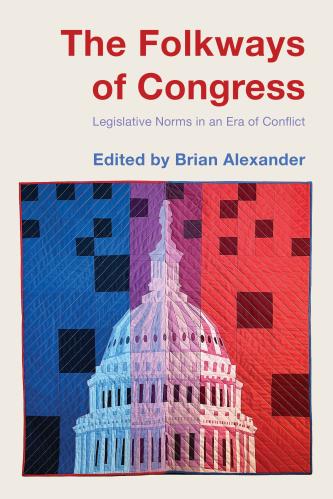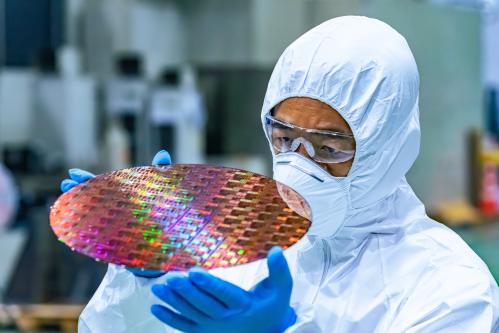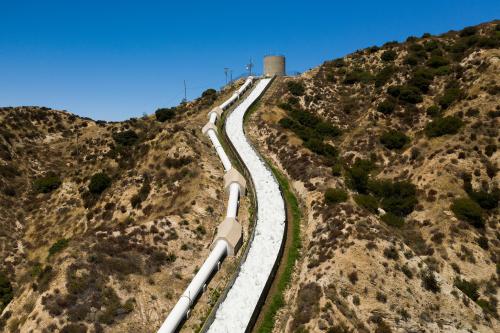Basic economic analysis shows that increased government spending would be more effective in stimulating the economy than the tax cuts preferred by the White House. Policymakers can design a stimulus package with a much larger bang for the buck than the administration’s plan if they can move beyond the tax-cut ideology that seems to underlie the President’s proposals.
The administration’s package largely ignores the central feature of a recession:
lack of demand. The primary problem is that the nation’s firms face a reduction in
demand for their products—not that they lack available workers, equipment, or
anything else needed to produce goods and services. Indiscriminately injecting cash
into such firms through tax breaks, without linking the tax breaks to new activity,
would do little if anything to address the underlying difficulty.
Firms with reduced demand for their products lay off workers, regardless of how much
cash they have. Managers have a fiduciary responsibility to maximize profits, and in
the face of reduced demand, firms typically reduce costs by cutting back on
production, which triggers layoffs.
As the number of unemployed workers increases, a downward economic spiral can occur.
Households with unemployed workers, facing a sharp decline in their incomes, cut back
on spending and further reduce the demand for products. That, in turn, leads to
additional layoffs. This harmful cycle, by which an economic slowdown can build into
a more serious recession, can be arrested by boosting demand for the goods and
services that American companies produce.
The role of government expenditures in an effective stimulus package
Only when a company faces renewed demand for its products will it stop shedding
workers and begin to create new jobs. The primary objective of a stimulus package
should be to spur spending on these products. And there is little question that
increases in government expenditures can be quite effective in boosting aggregate
demand and thereby stimulating the economy in the short run.
Temporary expansions in unemployment insurance, for example, would spur increased
consumer spending. Households in which a worker is laid off experience a significant
decline in income. They are likely to spend a high percentage of any additional
income they receive. A temporary expansion of unemployment benefits provides thus has
a direct economic benefit—it keeps more workers employed at firms that produce the
products the unemployed workers would buy. Temporary expansions in unemployment
insurance consequently are a “win-win” proposition: They help more people keep their
jobs and they also assist those unfortunate enough to have lost their jobs.
Glenn Hubbard, chairman of the president’s Council of Economic Advisers, has argued
against increasing expenditures on government programs as part of a stimulus package
for two reasons.
First, he contends, “a dollar spent by the government is one fewer that can be spent
by private businesses.” Second, he argues that, “new spending programs almost never
go away.” Both of these assertions make catchy sound bites. In the context of an
economic downturn, however, neither is correct.
The notion that a dollar spent by the government “crowds out” one dollar of spending
by private businesses is correct only when the economy’s resources are fully
utilized; in that case, additional demand on those resources by the government
necessarily reduces the demands that can be placed on them by the private sector.
But when the economy’s resources—our workers and plants and equipment—are not
fully utilized, government spending does not displace private-sector resources on a
dollar-for-dollar basis. Indeed, during an economic downturn, government spending can
“crowd in” additional private-sector activity by spurring overall demand.
The second argument against including expenditure increases in a stimulus package—that “new spending programs almost never go away…”—also is unfounded. This
statement implies that federal spending tends to rise inexorably over time and that
program expansions initiated in response to recessions inevitably continue after the
economy recovers.
Congressional Budget Office data show, however, that total federal spending has
fallen from 22.3 percent of the economy in 1991 to 18.2 percent in 2000, and that
federal spending is significantly lower now, as a share of the economy, than it was
during the 1980s.
Furthermore, federal spending is projected to decline further as a share of the
economy after the downturn ends and by 2010, to reach its lowest level since 1965.
In addition, congressional leaders who have proposed spending increases have called
for making such measures temporary; Administration rhetoric to the contrary, no
permanent entitlement increases are being proposed.
Why many corporate tax breaks would be ineffective stimulus measures
A number of the corporate tax breaks included in the House stimulus bill or the
administration’s stimulus package would be ineffective as stimulus measures because
they would give large sums of cash to corporations without providing much incentive
to use this cash to make new investments or retain more workers. The proposed repeal
of the corporate alternative minimum tax and the House provisions allowing a longer
carry-back of business losses are examples of such provisions. Both measures would
provide tax breaks to firms regardless of their current investment or employment
activities.
Indiscriminately injecting more cash into firms may, at first blush, sound like a
good idea because it would give firms more money that they could spend. But the
primary problem facing most firms is that their customers are reducing their
purchases. For the average firm, the problem at hand is not a lack of available cash.
Indeed, from the end of 1999 to the middle of 2001, holdings of liquid financial
assets by non-farm, non-financial corporations rose by more than $100 billion (or
more than 17 percent), and holdings of total financial assets by such firms rose by
more than $700 billion (or almost 9 percent).
Furthermore, if the problem is that some firms are prevented from undertaking new
activities because they are cash-constrained, the tax incentives should be focused on
such firms and conditioned on undertaking new activities.
Yet the corporate tax provisions in the House stimulus plan and the administration
stimulus package do not target firms that are cash-constrained or that would expand
their operations.
For example, General Motors would receive $833 million from full repeal of the
corporate alternative minimum tax. Yet GM has roughly $8 billion in cash and,
according to a company spokesman, has no plans to increase its investments.
Such tax breaks would instead primarily feed through into additional cash for
shareholders, who tend to be disproportionately higher-income. Since higher-income
households tend to spend relatively little of any additional income they receive,
little additional demand would be created.
To be sure, some corporate tax breaks would boost spending. In particular, temporary
corporate tax breaks that are tied to new investments can help to spur more
short-term spending.
A firm that decides to build a new plant or to purchase new computers now rather
than in the future in order to take advantage of a temporary investment tax incentive
will have to purchase materials, services, or equipment from another firm.
Unfortunately, most of the corporate tax breaks included in the House legislation
and the Bush administration’s proposal do not provide such incentives.
Many of the administration’s stimulus measures appear to be focused more on
longer-term considerations than short-term stimulus. Any contention that we need tax
cuts to strengthen the economy’s long-term prospects, however, would be inconsistent
with Mr. Hubbard’s statement that the terrorist attacks “did not undermine long-term
productivity growth.”
If the long-term fundamentals remain strong and the problem is that the economy is
weak in the short run, why isn’t the administration focusing on spurring the economy
now when it needs help? Why is its stimulus package dominated by permanent and
multi-year tax cuts that would produce little or no short-term stimulus?
Moreover, a stimulus package is not free: It leaves us with more government debt,
which can adversely affect longer-term economic performance.
Uncertainty and the stimulus package
Finally, although some recent data suggest the downturn may be relatively
short-lived, the outlook remains highly uncertain and many economists remain
concerned that the downturn could be significantly worse than currently expected.
Given such uncertainty, a well-designed stimulus package should adjust automatically
to changing circumstances. The best-designed stimulus measures would expand
automatically if the downturn turns out to be more severe but contract automatically
if the economy recovers more rapidly. Expansions in unemployment insurance benefits
work in precisely this manner.
By contrast, the many of administration’s proposed tax cuts would grow more costly
if the economy experiences a strong recovery.
Summing up
The bottom line is that many proposals to increase program expenditures would
stimulate the economy, minimize job loss, and adjust automatically to changing
economic conditions.
In comparison, many of the tax breaks the administration is championing would have a
low “bang for the buck” in bolstering demand, would do little to help avoid layoffs,
and would not provide an automatic insurance policy of injecting additional stimulus
into the economy if the recession turns out to be more severe than expected.
The Brookings Institution is committed to quality, independence, and impact.
We are supported by a diverse array of funders. In line with our values and policies, each Brookings publication represents the sole views of its author(s).









Commentary
Op-edTax Cuts Not the Best Stimulus
November 30, 2001